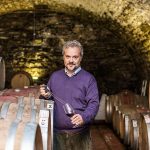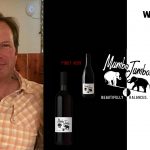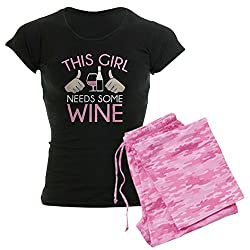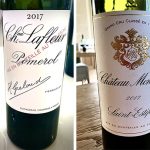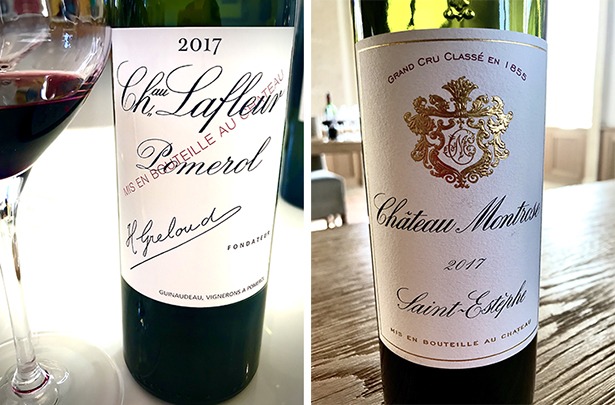
Smell is a potent wizard that transports you across thousands of miles andall the years you have lived.— Helen Keller
Article By : Lisa Perrotti-Brown | The Wine Advocate
Why did the chicken cross the road? Like most of us, I was first told this dumb joke when I was a just kid. Maybe it was because I was so young when I heard it, I didn’t get that this was supposed to be a joke. I thought the answer was obvious. Because it is fun. My grandfather lived across the road when I was growing up. When I was five years old, I couldn’t imagine anything more fun than exploring all the wonderful new discoveries that awaited me at my grandfather’s farm and apple orchard across the road. When I was told the real answer—to get to the other side—I couldn’t help but think that my answer was better. I still do. Ultimately, why do any of us increasingly travel across a growing number of roads, paths, boundaries and borders every year? Not just to get to the other side. Because it is fun. It is fun to go and see what’s on the other side of the road.
What do chickens crossing roads have to do with 2017 Bordeaux? For a start, a lot of these wines are fun. Out of the gate, many of the 2017s possess bags of perfume, freshness and vivacity. We have not seen this caliber of medium-bodied, bright, cheery, delicately styled Bordeaux wines in some time—maybe since 2001. But I think the best wines from 2017 are a few notches up on the 2001s in terms of quality. So, in spite of the current trade obstacles and dismissive opinions related to this vintage, I wholeheartedly believe a good number of the 2017s are worth crossing the road for.

Bordeaux’s 2017 Vintage in a Nutshell
As a recap, here’s a brief summary of the need-to-know details about the 2017 vintage, largely extracted from my original, in-depth report on the vintage available here.
- 2017 was a divergent vintage that splintered into a number of viticultural and winemaking paths, primarily as a consequence of the devastating April frosts, resulting in very different styles and varying quality levels across the region.
- The most obvious divergence occurred after the frost, splitting those producers that were completely or largely unaffected from those that lost a significant portion of their vineyards.
- The next divergence is among those with significant frost damage. There were those who chose to cut their losses and work only with the unaffected vines, often creating atypical styles since only part of the vineyard was used, versus those who chose to isolate the affected vines and ripen the second-generation fruit, some going on to create double-personality “Gemini wines” from blends of first-generation and second-generation fruit. (For more information on this, see the dedicated Gemini Wines article on Wine Journal.)
- Opportunities for greatness are well-spread throughout Bordeaux in 2017, and there was no single commune or grape variety that excelled, although the best wines tend to come from the superlative vineyards that were relatively untouched by the frosts, including those close to the estuary in Saint-Estèphe, Pauillac, Saint-Julien and Margaux on the Left Bank and the Right Bank vineyards on the plateaus in Pomerol and Saint-Émilion.
- In the end, 2017 is not nearly as consistently great as 2015 or 2016, but this vintage did produce some extraordinary wines.
- Stylistically, 2017 is a far cry from either 2015 or 2016, both of these being significantly warmer, sunnier vintages. In fact, 2017 is completely different from any recent vintage, and this is not a bad thing.
- The best 2017 reds are approachable when young yet are also built to age. This “good young/can hold” signature is something that Bordeaux hasn’t really ever been able to nail quite like this. Previous earlier-drinking vintages with cellaring potential relied on rich, concentrated, hedonistic fruit to carry it off, à la 2009. But 2017 is all about finesse, perfume and aromatic intensity as opposed to weighty richness.
- 2017’s “good young/can hold” style is mainly due to the quality of tannins: super ripe, finely grained and soft textured in the very best wines. We also have some very clever winemaking to thank for this. With the benefit of hindsight, perhaps, the best winemakers were ultra-cautious about not over-extracting.
- What’s more, there is also a moderate to high quantity of tannins in the best wines, with IPT levels ranging from around 60 to 80, in many cases at a similar level to 2015 counterparts.
- A lot of the successful 2017 reds tend to have moderate acidity, although the acids can appear fresher because the wines aren’t as rich and powerful as 2015 or 2016. They are mainly elegant, medium-bodied styles with moderate alcohol (generally 13% to 14%) and have intensely perfumed, multilayered aromatic profiles.
- Dry white Bordeaux wines generally need a huge shout-out this year—wow! These are bright, refreshing, elegant and intense, with far more consistency of quality than any other Bordeaux style in 2017.
- A few Sauternes wines are covered in this report, but a separate report on the 2017 wines from Sauternes will reveal a very good if smaller vintage for Bordeaux’s sweet whites.
- Now for the bad news: Unlike in 2015, in 2017 there is not a lot of value to be had at the lower price points. These vineyards were generally hit hardest by the frosts and tended to have fewer resources at their disposal.
- The least successful 2017 wines can be downright astringent, bitter and hard on the finish—lean, green and mean—sometimes as a consequence of attempts to use underripe second-generation fruit. Alternatively, and occasionally additionally, a number of wines were impacted by dilution as a result of the mid-September rains. This dilution can be experienced as anything from a slight dip in the mid-palate to, in extreme cases, downright hollow wines with abrupt finishes.
The Tastings
I conducted these tastings of the newly bottled 2017 Bordeaux wines in two phases. The wines were, for the most part, bottled during the summer of 2019. I travelled to Bordeaux in late September 2019 to conduct my first round of tastings (and check out the 2019 harvest). In February of this year, I returned to Bordeaux to re-taste a lot of the wines I had previously tasted and to conduct a larger sweep. Therefore, a lot of the “top” wines have been tasted two or three times.

Quality & Score Conclusions
Score chasers will have immediately clocked that there are no 100-point wines in this 2017 report. I dare say, some of them may even have stopped reading this report by now. (Perhaps that’s why some critics try to shoe-horn in a 100-pointer where it doesn’t fit?) 2017 is a vintage that balks at the facile nature of using ratings alone to buy wine. This is just one reason that makes me personally feel so drawn to the 2017s.
Circling back to these wines after bottling, I was pleasantly surprised that, on the whole, the quality of the vintage is a little more consistent than I had initially anticipated. A lot of the pitfalls I’d fretted about involving potentially skeletal wines with lean mid-palates and hard, rugged tannins were avoided. This said, I wasn’t finding the pinnacles I was hoping/expecting to see, leading me to believe some of the barrel samples I tasted were a bit fanciful or overly ambitious.
Qualitatively, how does 2017 compare to recent vintages? Well, it doesn’t have the highs nor consistency of 2015, 2016 or 2018. But the vintage is generally better than 2011, 2012, 2013 (for sure!) and even 2014. Why 2014? For a start, the winemaking has been handled that much more sensitively. The tannins, while prominent, are riper, better managed and more approachable in youth than most 2014s. And the best 2017s have bags of bright, crunchy fruit with plenty of subtle nuances, offering an opportunity for the wines to blossom into something more with aging.
Styles
As I alluded earlier, the majority of the 2017s are easy on the palate in youth, and yet the best wines also possess solid backbones and loads of nuances to ensure aging potential. Although a lot of the successful 2017 reds tend to have moderate acidity, the acids can appear fresher because the wines aren’t as rich and powerful as 2015 or 2016. These are mainly elegant, medium-bodied styles with moderate alcohol (generally 13% to 14%) and have intensely perfumed, multilayered aromatic profiles.
All this is not to say that it wasn’t possible to make some great fuller-bodied, rich, decadent styles in 2017. There are a few of these, but they are in the minority. Why? Apart from the nature of the vintage, Bordeaux winemakers are moving away from the later-harvested, big, voluptuous, riper styles and steering toward elegance and freshness. The good news for consumers is that those producers that are persisting with producing riper styles with more weight and mid-palate fruit are doing so smarter. They are lightening up on extraction and ensuring there is enough acidity to give the wine lift and energy. As luck would have it, they might just be on to something this vintage, as these are the producers who made a small clutch of 2017 wines that happen to be over the 14%-alcohol threshold for the 25% trade tariff imposed by the US.
Normally, I don’t name names when it comes to higher alcohol levels. But since the US government has decided, at least temporarily, to tax by alcohol numbers, I decided while I was tasting to jot down chateaux that had produced wines over 14% alcohol in 2017. Note that most if not all wines over 14% in 2017 will be Merlot-based wines. Here are a few recommended wines I am fairly certain fit that bill:
Aromes de Pavie
Badette
Bellefont-Belcier
Bellevue Mondotte
Clos Lunelles
Dalem
Domaine du Bouscat “Les Portes de l’Am…”
Feytit-Clinet
Haut Brisson
Laroque
Leroy-Beauval
Moulin du Cadet
Pavie
Pavie Decesse
Peby-Faugeres
Sansonnet
Soudard Cadet
Tour Saint Christophe
Back to Crossing the Road
I don’t need to tell readers that these are worrying times. As if Brexit and US-imposed tariffs were not enough for wine lovers to contend with, we now find ourselves coping with the chaos, fear and devastating loss of life caused by the COVID-19 pandemic. Frightening, unprecedented measures are being taken by governments whereby towns and whole countries are being locked down. Closures, cancellations, shutdowns, quarantines, travel bans. Today, I cancelled my plans to fly to Bordeaux for the 2019 Primeurs tastings because of the uncertainty of government-enforced travel restrictions. In consideration of my family and my other work responsibilities, I cannot risk being quarantined or not being able to return home from France for an extended period of time. For our own safety, we are abruptly, forcibly being told that we can’t go anywhere right now. Having to sit on our own side of the road for any period of time is the opposite of fun.
Admittedly, I’m biased here, but I believe wine can help us in times like these. Not because we need alcohol to get through the day. The fact that wine contains alcohol is somewhat incidental. It’s because wine is unique from other beverages and foods for, among other attributes, its complexity of aromas. There are estimated to be more than 800 different aroma compounds in a glass of wine. As wine lovers know, the types and concentrations of these can very clearly link a wine to a place. So, wine is somewhat singular in its ability to transport us. It can take us across the road without ever leaving our homes.
I may not be able to go to Bordeaux right now to taste the 2019s, and that loss of freedom, opportunity and, yes, adventure is upsetting. And yet, I have wine in my cellar. Sitting quietly, for now, on my own side of the road, I can at least visit Bordeaux and a whole world of other places simply by opening a bottle.

